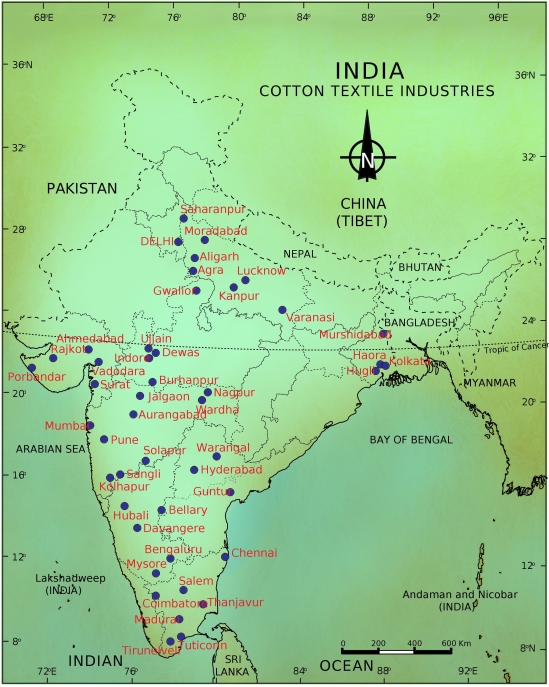-
Q. What are the factors that determine the location of cotton textile industries in India? Briefly explain the changes in the location of these industries from 19th century till the present times. (250 words)
16 Sep, 2019 GS Paper 1 GeographyApproach
- Introduce the answer by giving significance of cotton industries in Indian Economy.
- Explain the factors responsible.
- Mention the changes that have occured in sector from 19th century.
- Giving the optimistic wayforward underlying its potential for reaping demographic dividends.
Introduction
In global markets, India is the second largest supplier of textiles after China. Cotton textile is a market oriented industry and requires raw material which is non-perishable in nature.
Body
Factors Affecting the location of Cotton Textile Industry
- Raw Material: It is an agro-based industry and variability in the supply of raw cotton affects the production, there it requires constant supply of raw material. Historically these industries were located close to raw material sources but development in the transport facilities has enabled their spread to other areas.
- Labour: It is a labour-intensive industry and requires cheap labour. It is an important source of employment to large number of population in the country. India enjoys critical advantage over China due to low labour cost in textile sector.
- Climate: Cotton requires black soil as well as hot and humid climate. Cotton yarn cannot be spun successfully under dry conditions. The humidity of the atmosphere must be considerable; otherwise the yarn breaks constantly during the process of spinning.
- Cotton Industries requires abundant supply of water for various operations like dyeing, bleaching etc.
- Power: It requires a constant and cheap source of power for running powerlooms and textile machines. Earlier, these industries were located close to coal mines areas for cheap and continuous power supply.
- Markets: Availability of domestic and foriegn market for consumption plays a driving force for cotton industries.
- Transport: Easy means of transport facilities for easy procurement of raw material and disposing of finished goods to domestic and foriegn markets are dominating factors in the location cotton industries.
- Non-availability of deep port facilities on eatern coastline due to continental shelf has reduced competitiveness of Indian textiles abroad. Therefore, textile goods are first sent to big deep ports through smaller ships and then sent to European and American markets, which increases the time duration.
Cotton textiles sector has seen dramatic changes in its location during 19th century due to the number of factors:
- Earlier, they were situated in the hot and humid climate but the use of ‘humidifiers’ in the dry season has facilitated their establishment elsewhere. For Eg: Cotton Textiles Industries shifted from Kanpur to western region of the country due to erratic power supply which has made the operations of humidifier in dry season unviable.
- The development in the network of railways and national highways have reduced their dependency on proximity to raw material areas.
- Technological improvement has reduced the transportation cost of electricity, which has facilitated their location in far-flung areas. Also, production of electricity from new sources like nuclear, hydel has facilitated their spread otherwise they were located close to coal mines areas.
- The sector has seen the drastic shift from manual to machine based production and increased in number of powerlooms.
Conclusion
Cotton textiles sector carries huge potential for employment generation and solving India’s employment generation crisis. Therefore, the sector must be harnessed to its maxima with effective policy support.
To get PDF version, Please click on "Print PDF" button.
Print PDF





